Mastering Beach Photography
Jun 27, 2024
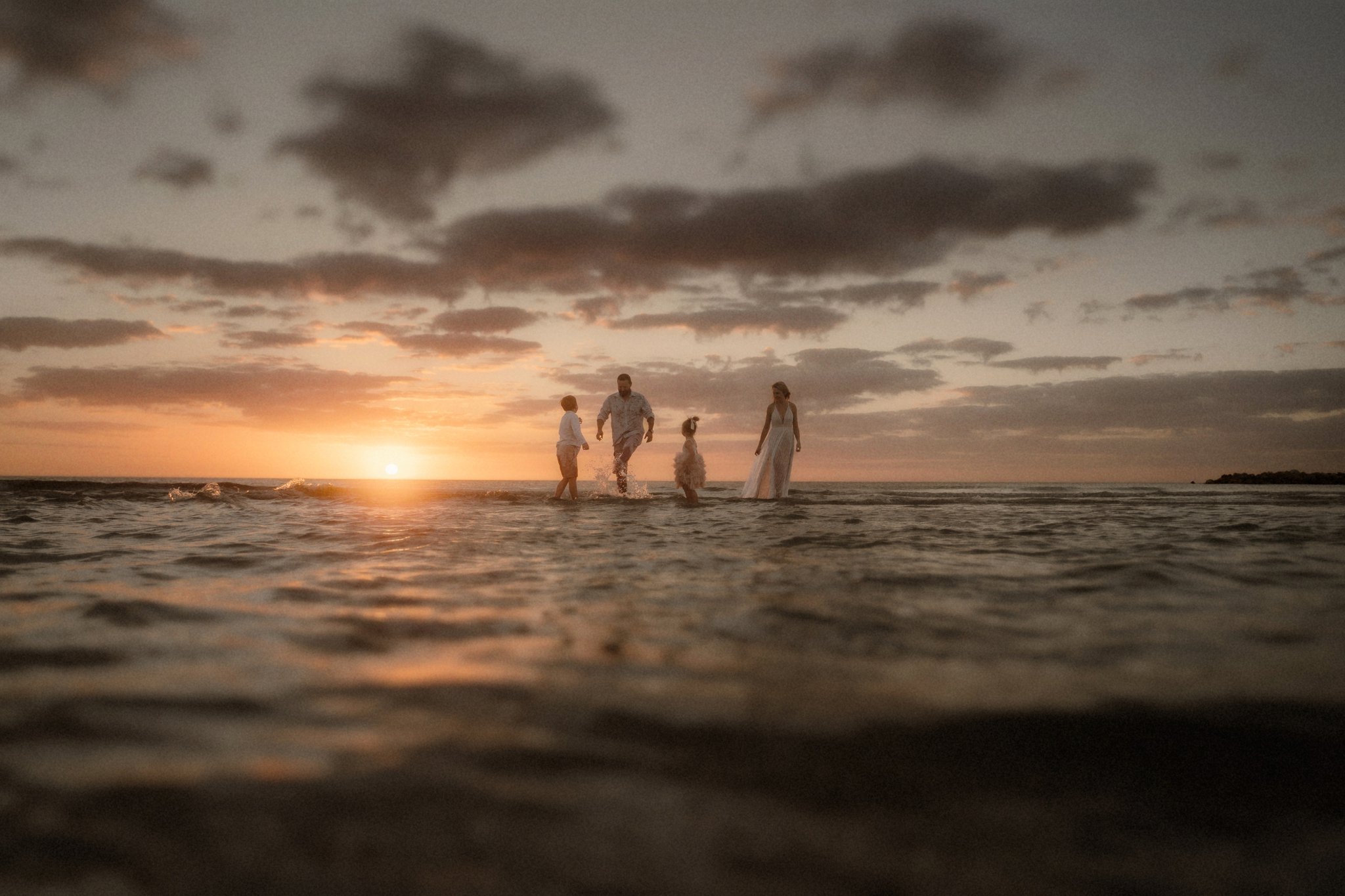
7 Tips for Your Next Beach Photography Adventure
Beaches are rife with opportunity. For a photographer this means beautiful landscapes, impressive hues, and fascinating patterns of light. They also can present one of the harshest, brightest and most unpredictable shooting environments forcing us to learn from and adapt to our surroundings.
To have a successful beach shooting experience; it’s important to know the fundamentals of photography. Exposure, color balance, focus, depth-of-field, composition, and lighting. These all play a huge role into how your beach images will turn out. I can not stress this enough – learn how your camera works, take that knowledge, and make it work for you. Knowing the basics will give you freedom to be fully creative in the way you shoot and will allow you to handle unpredictable situations.
Have you even wondered why a beach scene looks terrific to your eyes but fails to translate into a final image? It’s simple really, the camera reads light differently than our eyes do. It took me years of trial and error – lots of errors – for me to get the results that I wanted. In this post, I’ll share a few of my favorite tips to help you conquer your next beach adventure with success.
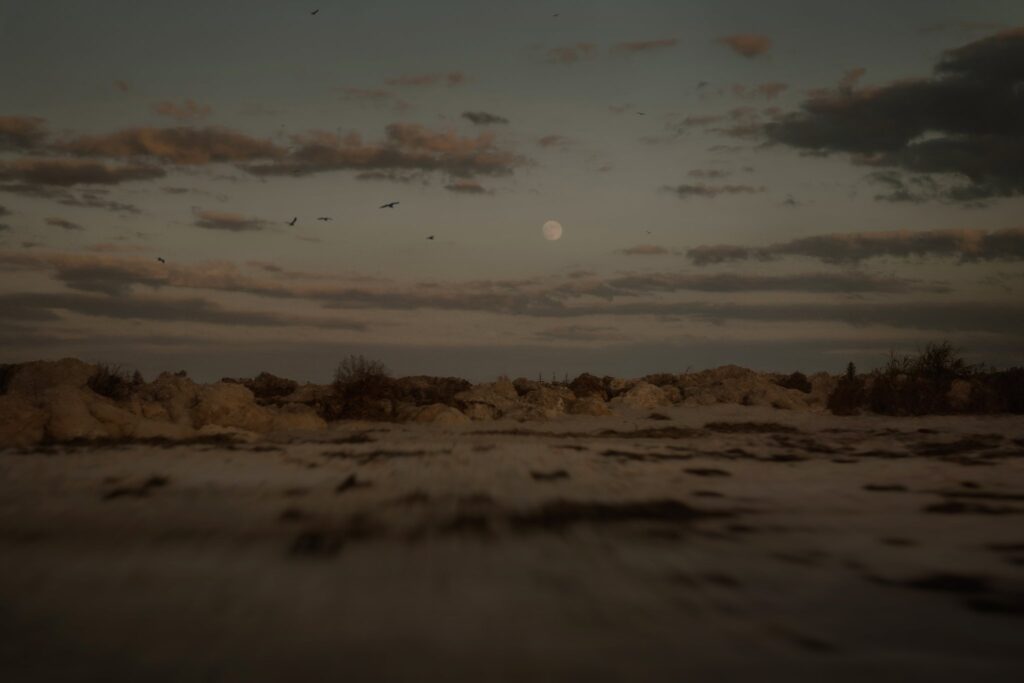



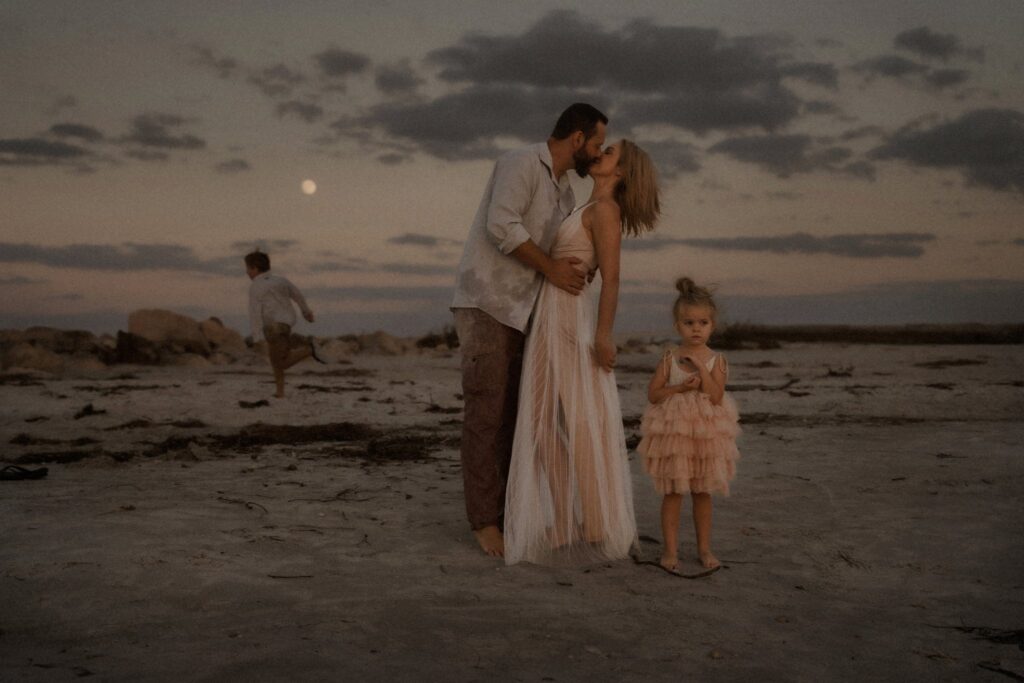
Timing is everything!
The sky very often plays the most important role in any kind of beach session. Do your research and find out exactly what time the sun is expected to set. On a clear day start your session as close to the sun setting as possible. This will provide you with the most beautiful shades of various colors.
My personal rule of thumb here on the Gulf coast of Florida for beach photography, is to not begin a beach sessions earlier than 45 minutes prior to the sun actually setting. If it’s a very cloudy day; it’s OK plan a bit earlier to be able to soak up every bit of light available.

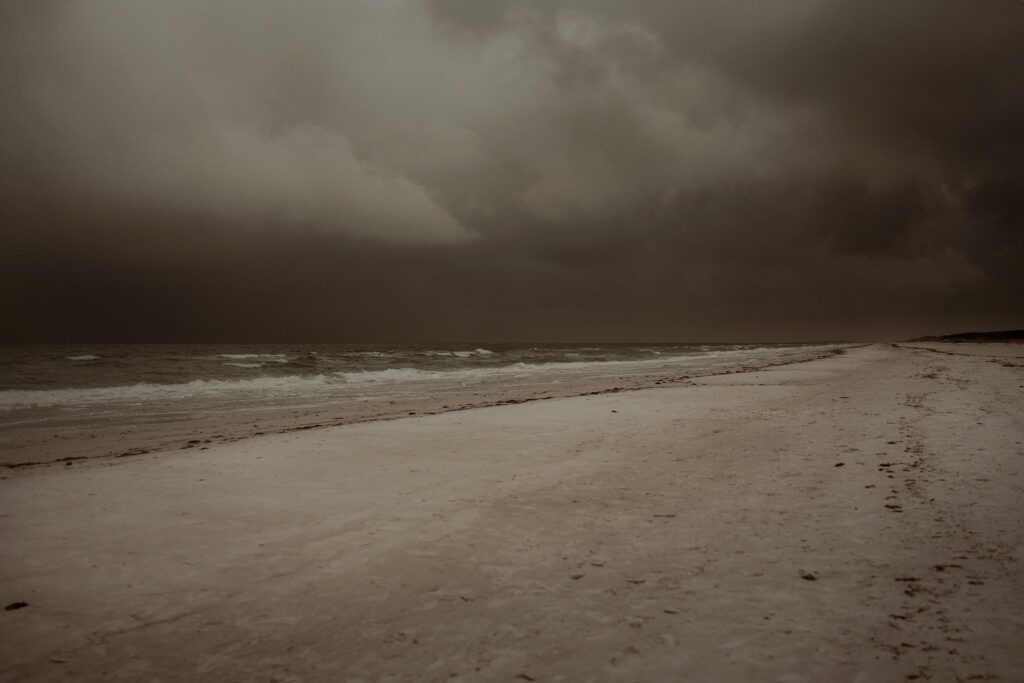

Light
Watch the sun. The moment the sun gets in your frame, balancing the exposure gets much trickier. You’ll either end up with a patch of blown-out highlights around the sun, or a completely underexposed image. This is especially a problem in beach areas where the harsh sun can reflect countless times on the ocean making your image too chaotic.
This doesn’t mean you should avoid the sun in your beach photos, but you need to be careful about it. Use creative shooting angles (maybe you need to shoot at an angle where the light hits the side of your clients) until the sun is so low on the horizon that the atmospheric haze turns it a softer shade of red, orange, or pink.
Remember, the direction of light will play a very important part in your finale image.
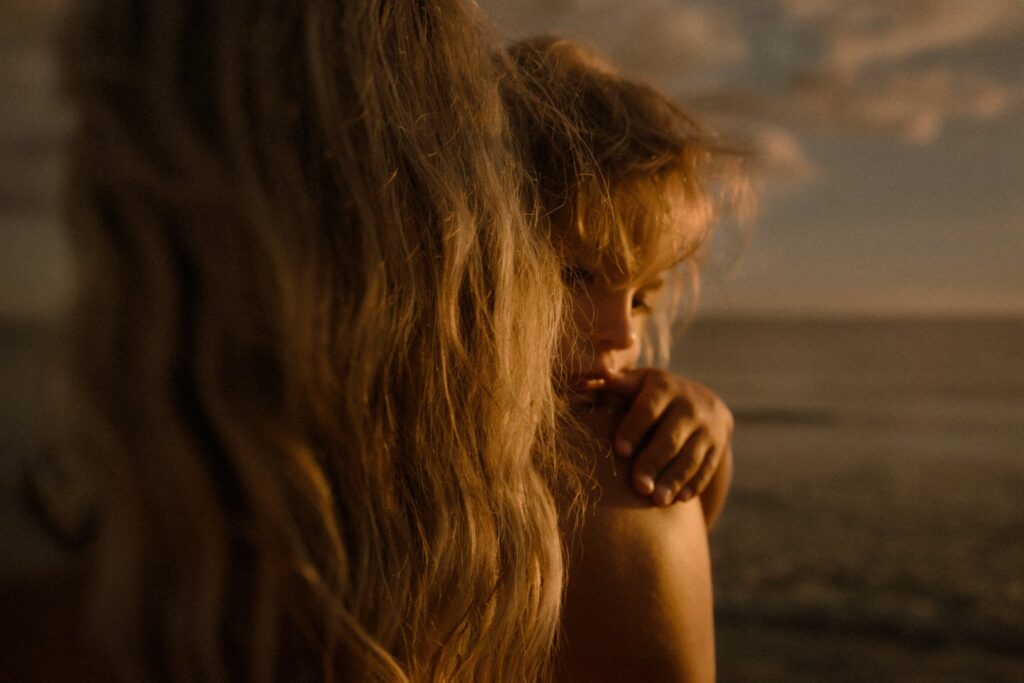
Strike a balance.
It’s real, and it’s possible! You can have a vibrant sky without underexposing your subject – it’s all about finding that equilibrium!
If you overexpose your sky because you’re trying so hard to get your client exposed perfectly, you’re not going to be able to get those yummy colors back in post. Expose for the sky just enough to where your clients aren’t completely underexposed and to a point where you can safely pull the exposure back up on them during editing.
My camera settings for this image was: ISO 100 | f 2.8 | ss 1/800

Creative Thinking
If the sun is still a bit too harsh at the beginning of your session; find spots of shade being thrown from nearby palm trees or sand dunes. It’s completely alright to spend a little time hiding from the sun until the light is perfect for you! Use the sun for all its beauty and play with shadows – make the shadows a part of your image to help tell a story.
Remember, shadows are not your foes, they are your canvas. Use them to bring an artistic twist to your images.
Change your perspective.
Find a foreground. Layering, that’s where the foreground comes into play. At the beach, the most common foregrounds you’ll find are rocks, patterns in the sand, seafoam, and patterns in the water. Don’t just point and shoot in the direction of the ocean, but actively look for the most interesting possible foregrounds. This will give your image depth and texture.
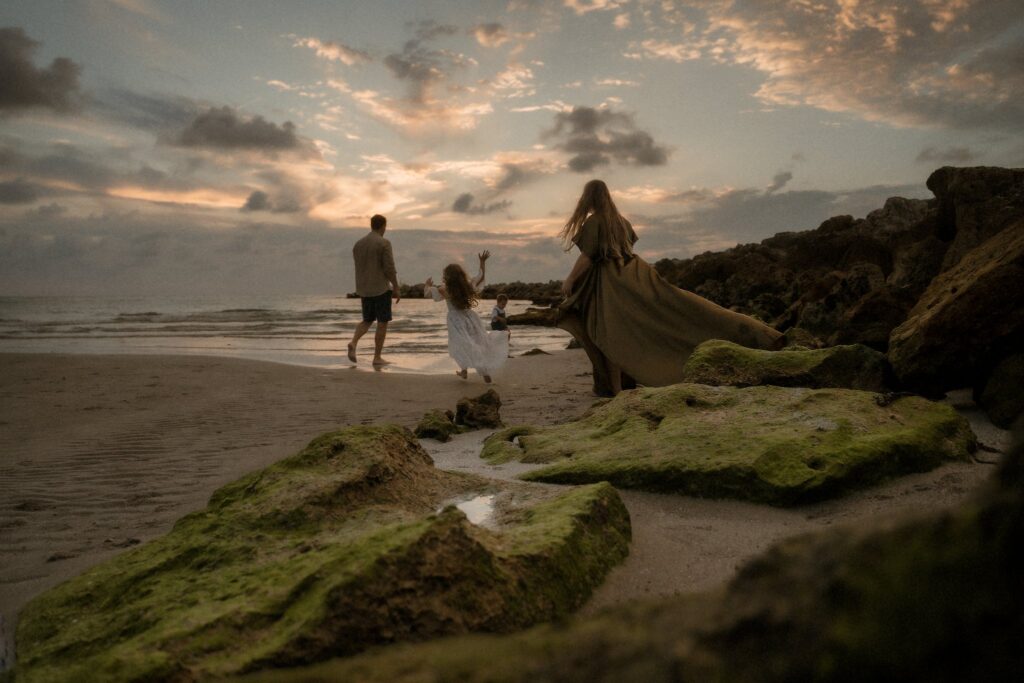
Get low. It is almost a rule of thumb in photography to get eye level or lower with our subject. Setting yourself and your camera low has two advantages. First, it emphasizes the foreground creating that layering look that draws us into the subject (small waves can look much bigger by using this technique creating a unique perspective). Second, a lower angle allows for adequate background and sky in your composition.
Stand on your toes. When the sky is clear and there’s not a cloud in sight, stand on your toes and aim down. This is a great time to get those close-up detail shots! Make this time into an adventure and collect seashells while you wait for the sun to go down.

Shoot at an angle. Avoiding a blown-out sky is hard but shooting at an angle will help keep some color in the sky while also giving your image a fun perspective. Play with the movement of the waves; let their movement lead us to our subject, wait for that perfect splash and be sure to get all that texture from seashells and seafoam!
Read the scene.
Beach scenery is always changing! Take a few minutes to look around during your session to see how the sky has changed behind you (the sky opposite of the sun give us the most poetic and bold colors), to the side of you or even under you. You don’t want to miss a beautiful moon rising, interesting shadows, dramatic clouds, or a hidden rainbow because you’re so focused on shooting straight toward the water. Look for the best light for the moment and emotion you are capturing.
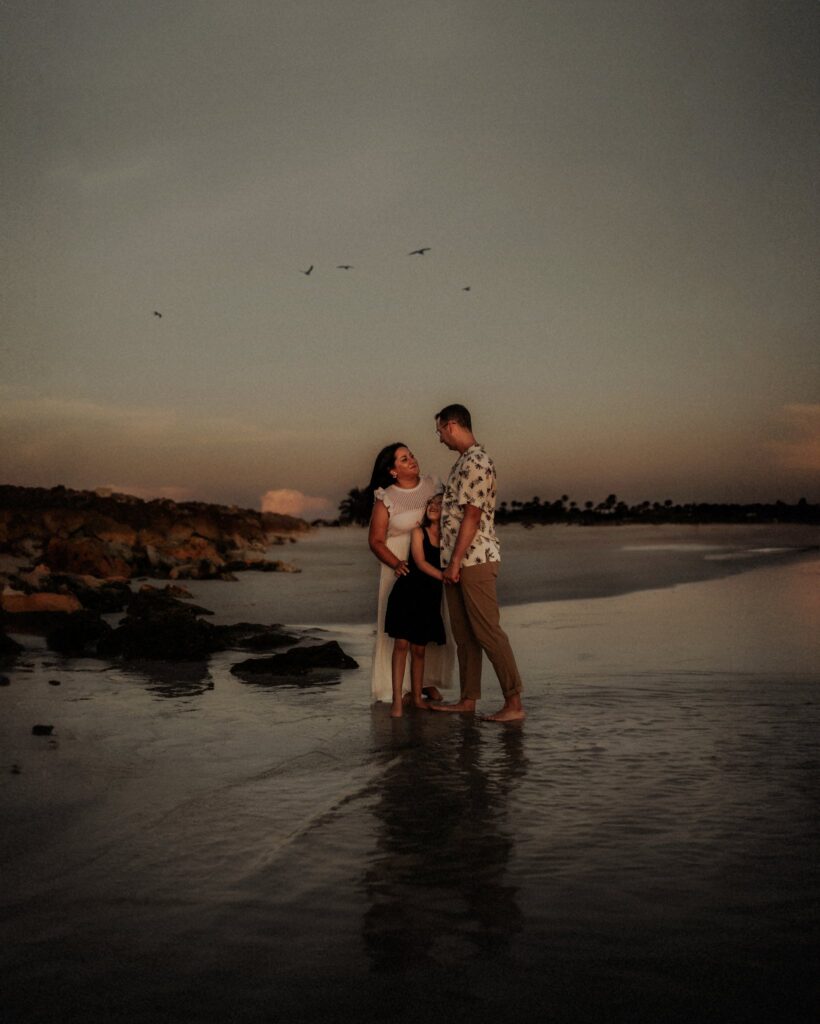
What’s my BEST tip for beach photography?
Filters.
Have you tried stacking a diffusion filter with an adjustable ND filter? If not, this will be such a game changer! Using a diffusion filter will help to bloom, scatter and soften your highlights. Think as the ND filter as a pair of sunglasses for you lens. Utilizing an adjustable one will allow you change the strength as the sun starts to go down.
Here’s the one I’ve recently fallen in love with: KF Concept
This powerful combo will maintain your camera settings exactly as you want them! Read more on about filters in my journal entry “Unmasking the Magic” where I go into a little more depth on the diffusion filter.
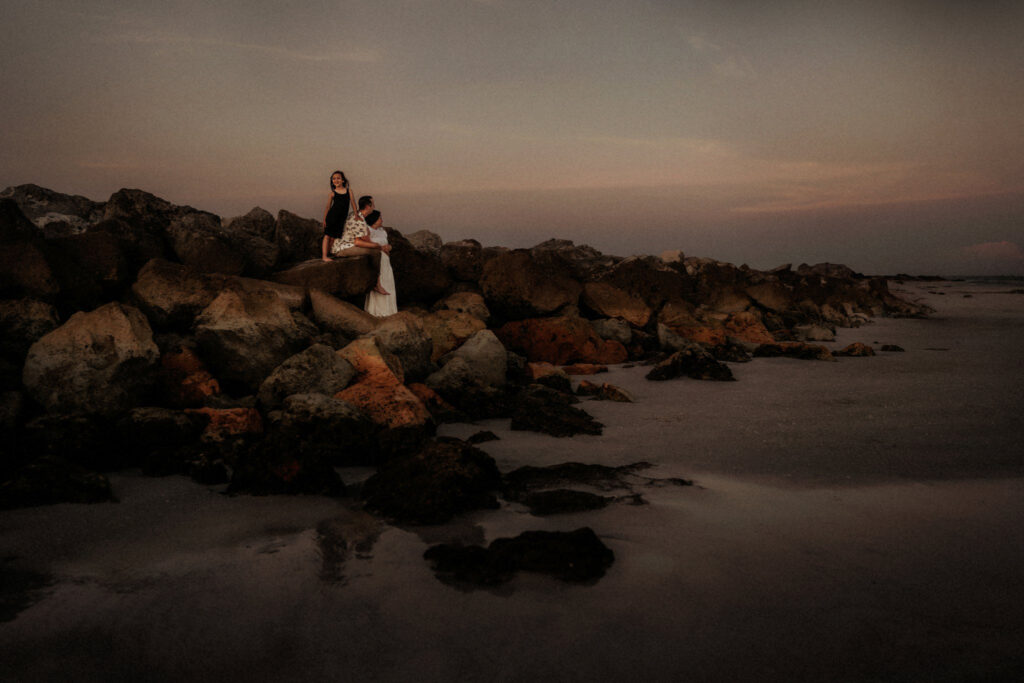
Most importantly, find your voice. Finding your voice will make your beach images uniquely yours. Compose your images in a way that makes your art stand out among the hundreds taken at the beach every day. Find your voice and share it with the world! In fact, I fully recommend shouting it loud for all to hear!
Be the first to comment